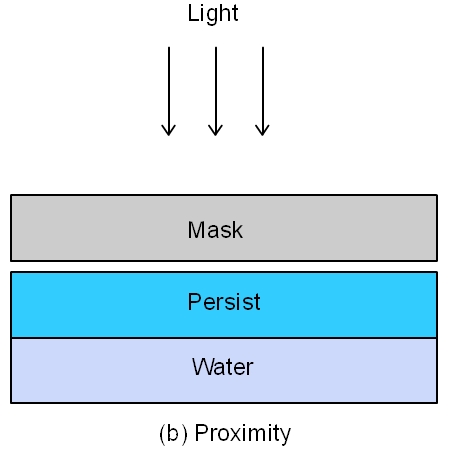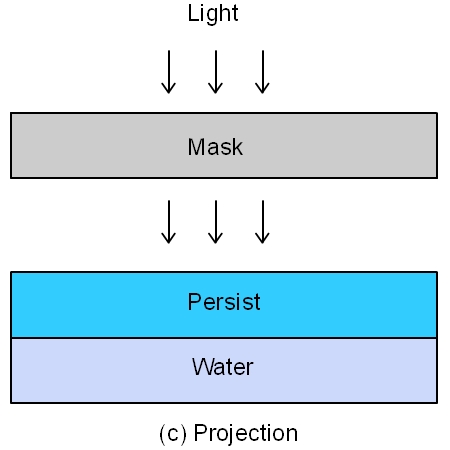We saw that using lens system the features on the mask were reduced to 4 or 5 times on the wafer. This is called projection printing (Fig 2.7c). A few decades back, two other types of masks were used. One is called contact printing(Fig 2.7a). In that case, the features on the mask will be the same size as the features on the wafer. The mask will be placed on top of the wafer, and it will be touching the photoresist. Hence the name contact printing is used. The disadvantage of this technique is that after a few wafers are processed, the photoresist will stick to the mask and the mask will have to be replaced. The second method was called proximity printing (Fig 2.7b). In this case, the mask will be held slightly above the photo resist. The features size on the mask was similar to the feature size on the wafer. Since the mask does not touch the wafer, the probability of mask damage is low. However, compared to projection printing, the mask still needs to be replaced occasionally. At present, only projection printing is used.



Figure 2.7 Different types of lithography
Although we have shown only one lens in the schematics here (Figure 2.5 Stage 3), in practice, the litho tool is very complicated and it will have complex lens system, facilities to control the lamp power and facilities to move the wafer and the mask in a very fine level.
|